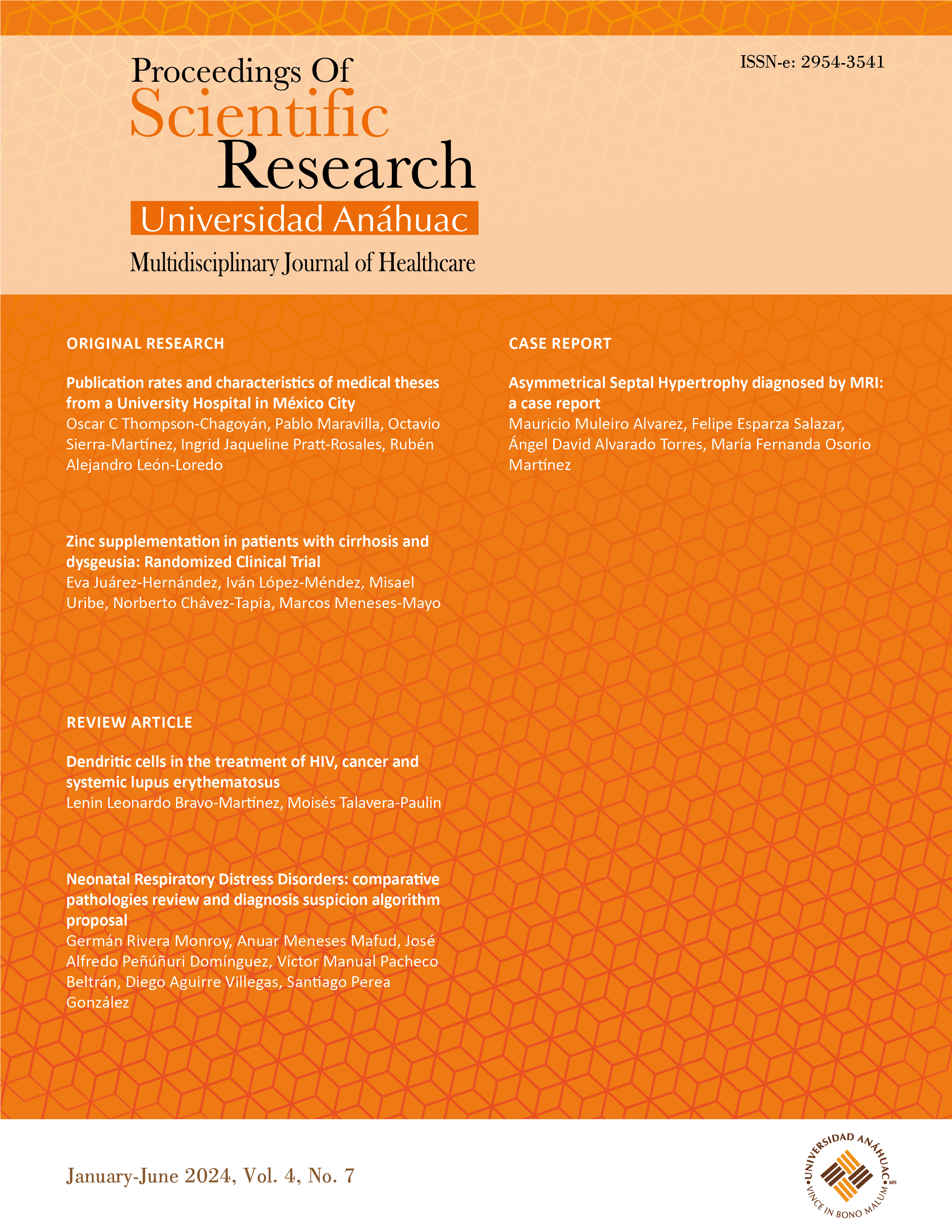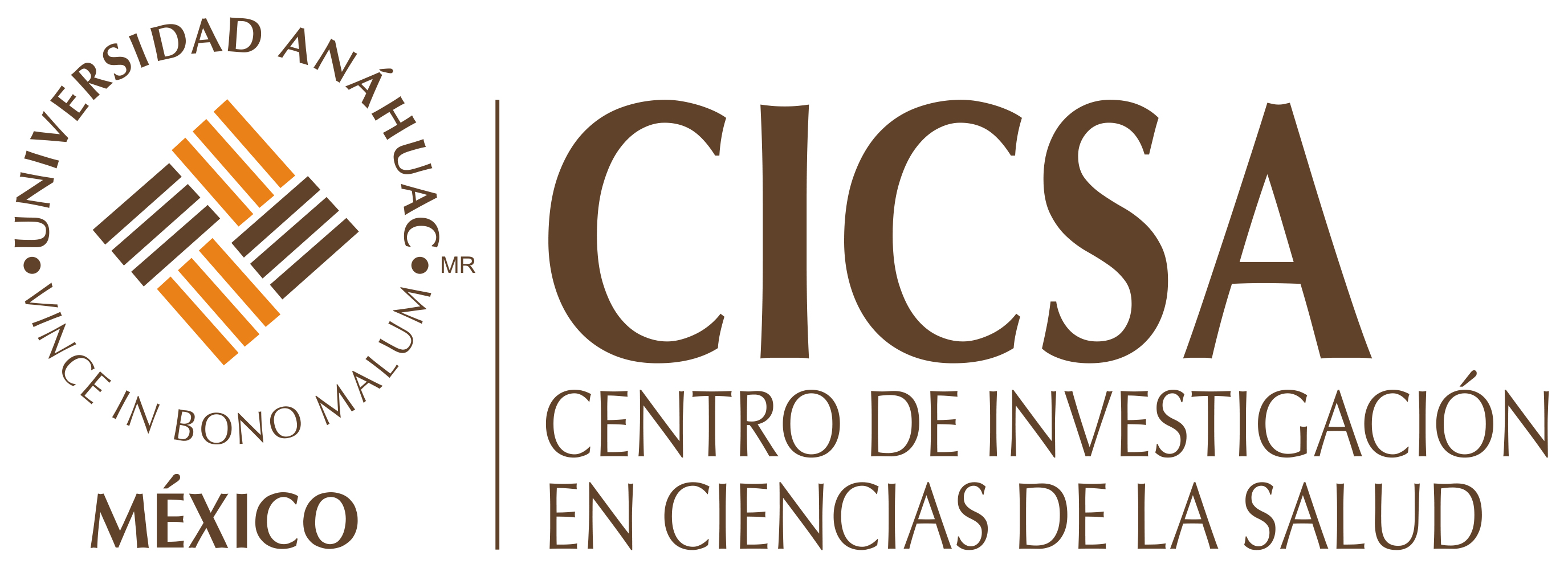Neonatal Respiratory Distress Disorders: Comparative pathologies review and diagnosis suspicion algorithm proposal
DOI:
https://doi.org/10.36105/psrua.2024v4n7.04Keywords:
neonatal respiratory distress syndrome, hyaline membrane disease, transient tachypnea of the newborn, meconium aspiration syndrome, differential diagnosisAbstract
Respiratory pathologies, along with congenital cardiac diseases, represent the main etiologies of neonatal disorders. Neonatal respiratory distress syndrome embraces several pathologies that share respiratory impairment as its main clinical manifestation. Epidemiological and risk factors for respiratory disorders, such as weeks of gestation accomplished before birth and maternal comorbidities, have been identified during the last decades. However, similar acute clinical manifestations, as well as laboratory and radiological findings, lack comprehension, which might lead to an incorrect diagnosis and delayed optimal treatment. Hyaline membrane disease, transient tachypnea of the newborn, and meconium aspiration syndrome represent the three most frequent types of neonatal respiratory distress syndrome. In this paper, we describe the risk factors and pathophysiology of each disease and compare clinical manifestations, as well as laboratory and radiological findings between them. For this purpose, we analized a key termed based literature review which include Systematic Reviews, Metanalysis, case reports and book chapters as well as private hospitals epidemiologic statistic reports. Finally, we present a differential diagnosis algorithm which can be used to identify which respiratory distress syndrome the newborn manifests and consequently give prompt and optimal treatment.
Downloads
References
Coto Cotallo GD, López Sastre J, Fernández Colomer B, lvarez Caro F, Ibáñez Fernández A. Recién nacido a término con dificultad respiratoria: enfoque diagnóstico y terapéutico (AEP).2008. Consulted october 15 2022. Available at: http://hdl.handle.net/10651/11831
Yadav S, Lee B, Kamity R. Neonatal Respiratory Distress Syndrome. 2023 Jul 25. In: StatPearls. Treasure Island (FL): StatPearls Publishing; 2023 Jan–. Available at: https://www.ncbi.nlm.nih.gov/books/NBK560779/
Corsini I, Parri N, Ficial B, Dani C. Lung ultrasound in the neonatal intensive care unit: Review of the literature and future perspectives. Pediatr Pulmonol. 2020; 55:1550. https://doi.org/10.1002/ppul.24792 DOI: https://doi.org/10.1002/ppul.24792
Malloy MH, McGovern JP. Hyaline membrane disease (HMD): an historical and Oslerian perspective. J Perinatol. 2018 Dec;38:1602-1606. https://doi.org/10.1038/s41372-018-0237-1 DOI: https://doi.org/10.1038/s41372-018-0237-1
Department of neonatology, Canberra hospital and health services. ACT Government health. HYALINE MEMBRANE DISEASE. Consulted october 15 2022. Available at: https://heal.nih.gov/research/infants-and-children/act-now
Elodie Z. “Pathophysiology of anomalies of alveolar development in the IUGR: experimental and clinical approach” HAL Molec. biol. 2014. Université Ren Descartes-Paris V. French Available at: https://theses.hal.science/tel-01060181v1/document
Reuter S, Moser C, Baack M. Respiratory distress in the newborn. Pediatr Rev. 2014 Oct;35(10):417-28; quiz 429. https://doi.org/10.1542/pir.35-10-417 DOI: https://doi.org/10.1542/pir.35.10.417
Rohwer AC, Oladapo OT, Hofmeyr GJ. Strategies for optimising antenatal corticosteroid administration for women with anticipated preterm birth. Cochrane Database Syst Rev. 2020, Issue 5. Art. No.: CD013633. https://doi.org/10.1002/14651858.CD013633 DOI: https://doi.org/10.1002/14651858.CD013633
McGoldrick E, Stewart F, Parker R, Dalziel SR. Antenatal corticosteroids for accelerating fetal lung maturation for women at risk of preterm birth. Cochrane Database Syst Rev. 2020 Dec 25;12:CD004454. https://doi.org/10.1002/14651858.CD004454.pub4 DOI: https://doi.org/10.1002/14651858.CD004454.pub4
Sweet, D. G., Carnielli, V., Greisen, G., Hallman, M., Ozek, E., te Pas, A., Plavka, R., Roehr, C. C., Saugstad, O. D., Simeoni, U., Speer, C. P., Vento, M., Visser, G. H. A., & Halliday, H. L. (2019). European Consensus Guidelines on the Management of Respiratory Distress Syndrome - 2019 Update. Neonatology, 115(4), 432. https://doi.org/10.1159/000499361 DOI: https://doi.org/10.1159/000499361
Ross N, Suresh SC, Dude A. History of respiratory problems in prior infant and respiratory morbidity in subsequent pregnancy. Am J Obstet Gynecol MFM. 2022 Mar;4:100544. https://doi.org/10.1016/j.ajogmf.2021.100544 DOI: https://doi.org/10.1016/j.ajogmf.2021.100544
Alhassen Z, Vali P, Guglani L, Lakshminrusimha S, Ryan RM. Recent Advances in Pathophysiology and Management of Transient Tachypnea of Newborn. J Perinatol. 2021 Jan;41(1):6-16. https://doi.org/10.1038/s41372-020-0757-3 DOI: https://doi.org/10.1038/s41372-020-0757-3
Luca M., Olga R., Maria G., Matteo B. Non-invasive respiratory support for the management of transient tachypnea of the newborn, 2020. Cochrane Database Syst Rev. 2020. https://doi.org/10.1002/14651858.CD013231.pub2 DOI: https://doi.org/10.1002/14651858.CD013231.pub2
Gupta, N., & Chawla, D. Fluid restriction in the management of transient tachypnea of the newborn. Cochrane Database Syst Rev. 2015. https://doi.org/10.1002/14651858.CD011466.pub2 DOI: https://doi.org/10.1002/14651858.CD011466
Monfredini C, Cavallin F, Villani PE, Paterlini G, Allais B, Trevisanuto D. Meconium Aspiration Syndrome: A Narrative Review. Children (Basel). 2021 Mar 17;8:230. https://doi.org/10.3390/children8030230 DOI: https://doi.org/10.3390/children8030230
Olicker AL, Raffay TM, Ryan RM. Neonatal Respiratory Distress Secondary to Meconium Aspiration Syndrome. Children (Basel). 2021 Mar 23;8:246. https://doi.org/10.3390/children8030246 DOI: https://doi.org/10.3390/children8030246
Chettri S, Bhat BV, Adhisivam B. Current Concepts in the Management of Meconium Aspiration Syndrome. Indian J Pediatr. 2016 Oct;83:1125-30. https://doi.org/10.1007/s12098-016-2128-9 DOI: https://doi.org/10.1007/s12098-016-2128-9
Setty SG, Batra M, Hedstrom AB. The Silverman Andersen respiratory severity score can be simplified and still predicts increased neonatal respiratory support. Acta Paediatr. 2020 Jun;109:1273-1275. https://doi.org/10.1111/apa.15142 DOI: https://doi.org/10.1111/apa.15142
Tana M, Tirone C, Aurilia C, Lio A, Paladini A, Fattore S, Esposito A, De Tomaso D, Vento G. Respiratory Management of the Preterm Infant: Supporting Evidence-Based Practice at the Bedside. Children (Basel). 2023 Mar 10;10:535. https://doi.org/10.3390/children10030535 DOI: https://doi.org/10.3390/children10030535
Osman A, Halling C, Crume M, Al Tabosh H, Odackal N, Ball MK. Meconium aspiration syndrome: a comprehensive review. J Perinatol. 2023. 43, 1211–1221. https://doi.org/10.1038/s41372-023-01708-2 DOI: https://doi.org/10.1038/s41372-023-01708-2
Yang G, Qiao Y, Sun X, Yang T, Lv A, Deng M. The clinical effects of high-frequency oscillatory ventilation in the treatment of neonatal severe meconium aspiration syndrome complicated with severe acute respiratory distress syndrome. BMC Pediatr. 2021 Dec 10;21:560. https://doi.org/10.1186/s12887-021-03042-y DOI: https://doi.org/10.1186/s12887-021-03042-y

Published
Issue
Section
License
Copyright (c) 2024 Germán Rivera Monroy, Anuar Meneses Mafud, José Alfredo Peñúñuri Domínguez, Víctor Manual Pacheco Beltrán, Diego Aguirre Villegas, Santiago Perea González

This work is licensed under a Creative Commons Attribution-NonCommercial-NoDerivatives 4.0 International License.
All the intellectual content found in this publication is licensed to the consumer public under the figure of Creative Commons©, unless the author of said content has agreed otherwise or limited said faculty to "Proceedings of Scientific Research Universidad Anáhuac. Multidisciplinary Journal of Healthcare©" or "Universidad Anáhuac Mexico©" in writing and expressly.
Proceedings of Scientific Research Universidad Anáhuac. Multidisciplinary Journal of Healthcare is distributed under a Creative Commons Attribution-NonCommercial-NoDerivatives 4.0 International License.
The author retains the economic rights without restrictions and guarantees the journal the right to be the first publication of the work. The author is free to publish his article in any other medium, such as an institutional repository.













